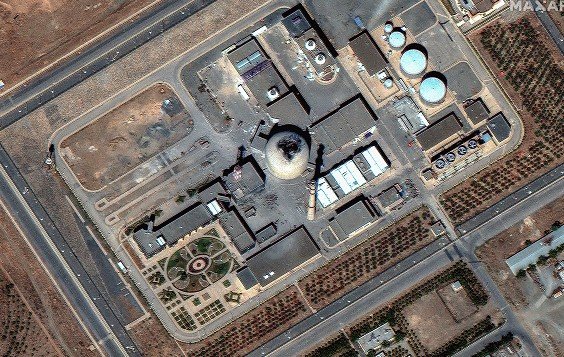The White House is on the defensive after a leaked intelligence report threw cold water on U.S. claims of obliterating Iran’s nuclear sites. The report, surfacing just hours after President Trump’s ceasefire announcement, suggests the damage may be far less than advertised.
“Destroyed” or Just Delayed?
For days, the narrative out of Washington painted a clean, decisive blow. Bunker-busting bombs. Satellite-guided stealth. A full shutdown of Iran’s nuclear ambitions—at least that’s what Trump told the world from the White House lawn.
Turns out, it’s more complicated.
According to sources familiar with a classified U.S. Defense Intelligence Agency assessment, the U.S. airstrikes did not destroy the centrifuges. Nor did they touch much of the enriched uranium Iran had stockpiled underground. What did happen? Entrances to several facilities were sealed. That’s it.
No craters. No melted machinery. Just a few locked doors, essentially.
That’s a far cry from “mission accomplished.”

Tehran’s Defiant Response
Iran wasted no time pushing back against the White House’s story. Officials in Tehran bluntly denied the existence of any “agreed” ceasefire deal. One government spokesperson said on national TV that the fight continues and that “victory cannot be declared on assumptions.”
Their message was clear: Iran doesn’t see this as over yet.
That same spokesperson also rejected U.S. claims that their nuclear infrastructure had been demolished. “Our program is intact. We continue with strength,” they said, surrounded by a crowd waving national flags.
One sentence stood out from Iran’s Revolutionary Guard commander:
“This is not a truce. This is halftime.”
White House Fires Back
The Biden-era communications playbook would have handled this differently. But this is Trump 2.0.
Karline Leavitt, the new White House Press Secretary, confirmed that the leaked report was real. But she called its contents “flat-out wrong,” and dismissed the people who spoke to reporters as “deep state leakers trying to undermine the president.”
That statement raised eyebrows in the national security community. Especially because the document in question was classified “Top Secret” and authored by the Pentagon’s own intelligence unit.
“They’re leaking it because they know what’s coming next: accountability,” said one former senior U.S. defense official.
Three Days, Three Stories
In the span of 72 hours, the public has been told three different things:
-
That Iran’s nuclear program was “completely wiped out”
-
That a U.S. intelligence report says it was only “delayed by months”
-
That Iran says the sites weren’t destroyed at all and are still operational
Hard to know what to believe, right?
This is the latest chapter in the long, strange saga of public trust in wartime reporting. And it’s not new. But the speed with which narratives are being contradicted now—almost in real time—is alarming even seasoned observers.
Who Actually Declared Victory?
By Tuesday morning, all three parties—Iran, Israel, and the United States—had declared themselves the winner. That’s not a typo. They each took to airwaves or social media to claim success.
-
Trump called the U.S. mission a “textbook example of precision and strength.”
-
Israeli Defense Forces posted dramatic thermal imagery of bunker penetrations.
-
Iran’s state news channels aired footage of their centrifuges still humming in motion.
What the Intelligence Says—And Doesn’t Say
To make sense of it all, here’s a quick breakdown of what we know from the leaked DIA assessment, as reported by multiple outlets like Reuters and the AP:
| DIA Intelligence Findings (Unofficial Leak) | White House Claim |
|---|---|
| Underground facilities were not destroyed | All facilities “neutralized” |
| Centrifuges remain largely intact | “Wiped out” entire enrichment capability |
| Damage delays Iran’s nuke timeline by months, not years | “Set back by decades” |
| Entrances to some sites sealed, but contents inside untouched | “Everything buried was hit” |
That’s a lot of gray area between the lines.
Why the Damage Assessment Matters So Much
Iran’s nuclear program isn’t just a national project. It’s symbolic. The slightest claim about its status can trigger ripple effects across:
-
Global oil markets
-
Diplomatic talks with the EU and China
-
Regional posturing in Lebanon, Syria, and the Gulf
Even a “few months” delay, if true, still buys time. But if the program is genuinely intact, then the U.S. may have just used its military card without forcing any long-term change.
One analyst put it this way: “If you empty your gun and the target’s still standing, you’ve lost more than just bullets.”
India Watching Closely, But Cautiously
While the U.S. juggles conflicting narratives and Iran projects strength, India’s foreign ministry issued a carefully worded statement. It welcomed the reports of a ceasefire—but stopped short of confirming it.
Delhi also noted its embassy in Tehran was winding down evacuation efforts, but left the door open to “reassess strategy” if needed.
That’s diplomat-speak for: we’re not sure this is over yet.
India’s cautious tone mirrors a wider trend—where regional powers are acknowledging ceasefires, but not putting much stock in them.
So… Who’s Really in Control?
That’s the million-dollar question. And for now, it seems no one has a clear grip on the wheel.
Trump wants to score political points ahead of the election. Israel is pushing a narrative of total victory. Iran is doing damage control while pretending nothing happened.
Meanwhile, intelligence officers are leaking like sieves. Diplomats are scrambling to get clarity. And the public? Mostly left scratching their heads.
Someone’s lying—or everyone’s spinning.
What Happens Next Is Up in the Air
Maybe more intel will surface. Maybe inspectors will be allowed in. Or maybe it’ll all fade into the news cycle like everything else these days.
But right now, the picture is far from settled. The ceasefire feels temporary. And those nuclear sites? Well, they might be down, but definitely not out.
